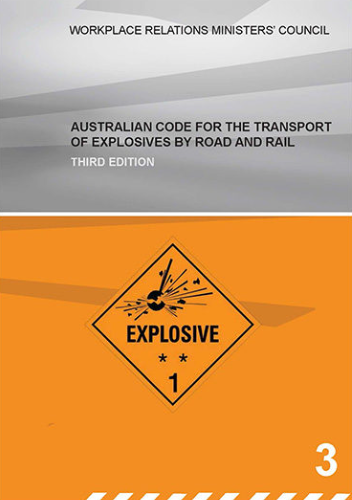Explosive Transport Driver Resource Page

Licence Requirements
Applicants seeking to obtain or renew an explosives driver’s license must demonstrate proficiency in the specific competencies outlined by the Competent Authority of the jurisdiction in which they intend to operate. A national approach is now being implemented by the States and Territories, requiring individuals who operate vehicles carrying a consignment of explosives to hold an explosive driver’s license. To obtain or maintain an explosives driver’s license in Australia, most States and Territories now require applicants to obtain the relevant explosive driver units of competency by attending an approved course conducted by a Registered Training Organization (RTO). Star Education is an approved RTO that can deliver the approved training and issue the required units of competencies that are mandatory as part of the explosive driver’s license application process.
Course Information

ABOUT THIS SHORT COURSE
This course equips learners with the skills and knowledge to safely handle explosives during loading, unloading, and transportation. It also covers regulatory requirements for safe vehicle operation and consulting authorities while transporting explosive consignments. of category 1, 2 & 3.
The course covers two units of competency:
-
TLID0014: Load and unload explosives and dangerous goods
-
TLID3015: Identify and label explosives and dangerous goods
LEARNING OUTCOMES
-
Responsibilities and duties for the transport of explosives
-
Systems, organizations, and people who impact on the transport of explosives
-
State/territory legislation is identified
-
Proper shipping names and other relevant information from the numerical and alphabetical explosive lists are identified
-
UN class and division labels for explosives are determined in accordance with the AE Code
-
Subsidiary risks for explosives are identified and confirmed as required
-
Identify packing instructions and special provisions for explosive products
-
Identifying properties and observations for explosives
-
Identifying explosives that are prohibited for transport
-
Interpret/identify explosive classification codes and associated risks
-
Allocation of explosive divisions to mix consignments
-
Explosive risk categories are determined and allocated
-
High security risk loads of explosives are identified
-
Identifying Classification for loads of fireworks
-
Maintain Class 1 dangerous goods documentation
-
Placard loads are determined from AE Code
-
Placarding of vehicles/loads
-
Regulatory requirements for the transport of fireworks
-
Regulatory requirements for transporting explosives
-
Regulatory requirements for planning routes
-
Special transport operations are conducted in accordance with regulations
-
Requirements for import and export of freight Containers
-
Regulatory for safety equipment, including personal protective equipment (PPE) is determined
-
Vehicle licensing requirements
-
Explosive vehicle specifications
-
Explosive packaging
-
Explosive HAZCHEM Codes
-
Transport Emergency Response Procedures
-
Interstate Importing

Training Resources
Here are the training resources you’ll need for both pre-course study and face-to-face training. I suggest you either download and print the material or save it as a PDF so you can easily access it during the training.
Language Literacy & Numeracy Assessment
The language literacy and numeracy test is designed to assess an individual’s foundational skills in reading, writing, communication, and maths. In the context of vocational education and training (VET), RTOs use these tests to gauge whether prospective learners have the requisite skills to complete a qualification successfully.
Explosive Driver Licence Pre Course Training
This Pre-Course training is an obligatory component of the course. It must be completed prior to conducting the face-to-face training session. Upon enrollment, STAR Education will assign you a trainer and assessor, who you can contact for assistance throughout the Pre-Course Training.
